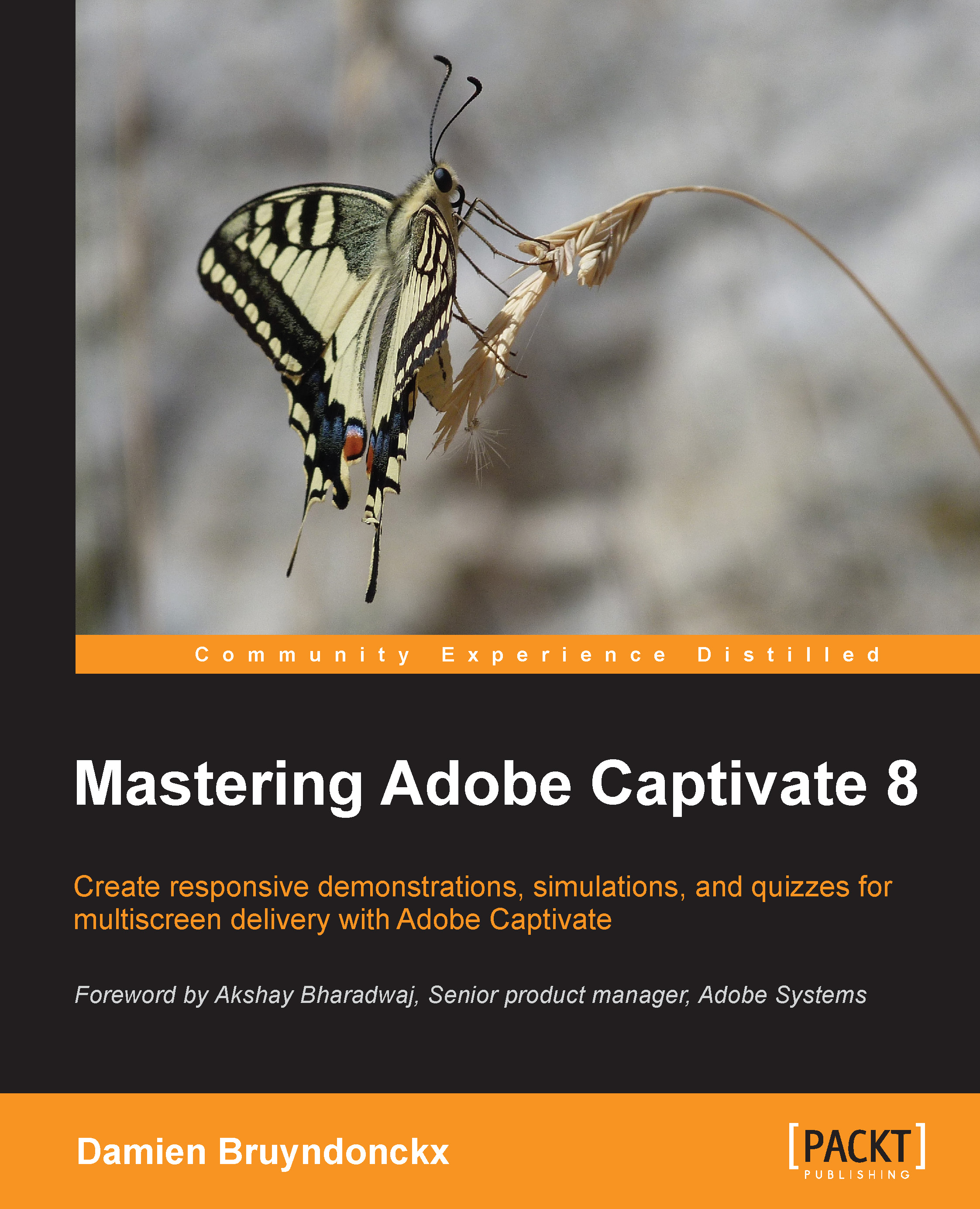Chapter 1. Getting Started with Adobe Captivate 8
Since its introduction in 2004, Captivate has always been the leading solution for authoring eLearning content. In the beginning, it was a very simple screen-capture utility called FlashCam. In 2002, a company named eHelp acquired FlashCam and turned it into a fully-fledged eLearning authoring tool called RoboDemo. In 2004, another company called Macromedia acquired eHelp, changed the name of the product once again, and Macromedia Captivate was born. A few months later, Adobe acquired Macromedia and, consequently, Macromedia Captivate became Adobe Captivate.
As the years passed, Adobe released Captivate 2, 3, and 4—adding tools, objects, and features along the way. One of the most significant events in the Captivate history took place in July 2010, when Adobe released Captivate 5. For that release, Adobe engineers rewrote the code of the entire application from the ground up. As a result, Captivate 5 was the first version to be available on both Mac OS and Windows. Version 6 was another milestone for Captivate as it was the first version to propose an HTML5 publishing mechanism. Prior to Captivate 6, the main publishing option was Adobe Flash.
As of today, the latest version of Captivate is Version 8. Captivate 8 introduces a revolutionary new feature called
Responsive Projects. Responsive Projects allow you to rearrange the content of your eLearning projects for the desktop, the tablet, and for smartphone, making mobile learning a whole lot easier and powerful. Other new features introduced in Captivate 8 include an improved HTML5 publishing mechanism, support for geolocation and gestures on mobile devices, a brand new user interface, and tons of other (not so) small enhancements.
With all this power sitting one click away, it is easy to overcharge your projects with lots of complicated audiovisual effects and sophisticated interactions that can ultimately drive the learner away from the primary objective of every Captivate project: teaching.
While working with Captivate, one should never forget that Captivate is an eLearning authoring tool. At the most basic level, it simply means that you, the developer of the project, and your audience are united by a very special kind of relationship: a student-teacher relationship. Therefore, from now on—and for the rest of the book—you will not be called the developer or the programmer, but the teacher. The ones who will view your finished applications will not be the users or the visitors, but will be called the learners or the students. You will see that it changes everything.
In this chapter, you will:
- Discover the available options to obtain Captivate
- Discover the general steps of the Captivate production process
- Tour the all new Captivate 8 interface
- Work with panels and workspaces
- View the finished sample applications



 Free Chapter
Free Chapter

